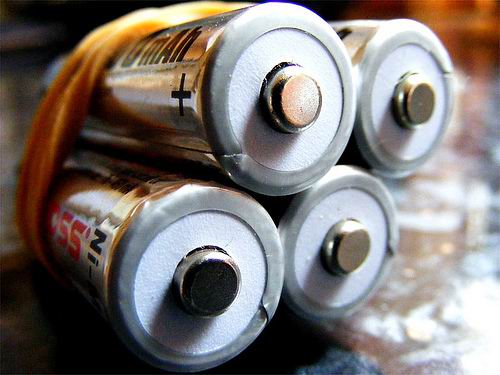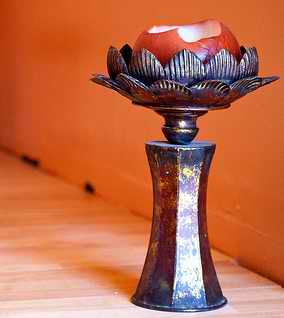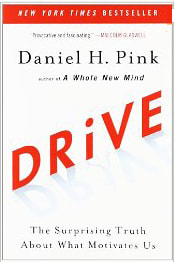|
I heard a great webinar talk this week by Rick Hanson, a psychologist who’s written several books about reprogramming the brain through positivity and mindfulness training.
(The webinar was through the National Institute for the Clinical Application of Behavioral Medicine at www.nicabm.com, which runs great free series for psychologists and interested members of the public.) One of the things I took from the talk was the concept that we as humans tend towards the negative as a survival instinct, because those ancestors who were too optimistic got eaten. Because we have that instinct (which is programmed through the reactions of the amygdala), over the course of our lives, we can tend towards more and more fear and anxiety until we have a hair-trigger response to it. We may start off with a tendency towards this because of an unsafe home environment, or it might have been started by a severe illness, by a trauma or series of traumas like a broken bone, an auto accident or even cerebral palsy. (My dear friend with cerebral palsy has told me that since finding an online CP group, she realized that everyone has been diagnosed with fibromyalgia along the way, after enough falls and injuries.) So I’ve mentioned before that I have read that this is a freeze response problem. Folks talk about fight or flight all the time, but there is also a freeze response and these neuropsychologist types are thinking that we chronic pain sufferers have our freeze response on overdrive. I heard a story on NPR the other day about a woman who is in chronic pain since the traumatic death of her daughter, who was killed right in front of her. I’m sure that at least part of her pain is from this freeze response. (The story was on Morning Edition on 1/23/13 if you want to listen to it at http://www.npr.org.) Unfortunately, we are part of a culture who thinks that if pain is partly in your head, that you are mental, or shirking, and you should just pull yourself up by your bootstraps–but this mindset is neither helpful nor true! I firmly believe that the freeze response is a normal, human response to trauma and the only difference between folks in agony and those who are not is the level of trauma you’ve been exposed to as well as what developmental stage you were in when you were exposed to the trauma. In other words, it takes less to traumatize a baby than it would an adult. People have different genes and different backgrounds which may lead them to use the fight response or the flight response instead of the freeze response, but if enough bad things happen to anyone, I believe they will go from fight/flight and into freeze and that’s where the pain will eventually come from. (Now obviously, the fight response on overdrive leads to heart disease, so it’s not just the freeze response that is a problem.) Freeze is about muscle constriction- muscle tightening- which from one mildly traumatic event means nothing, but with repetition it becomes a pattern, until eventually it isn’t even noticed anymore, since the brain can hide pain to help us function. That’s also a survival response- when in fight/flight/freeze, our pain state is hidden from us, so we can run on that injured leg and escape to safety. Only the freeze state never ends for some of us. We need to change this cultural mindset; to get the word out and turn things around, because there’s an epidemic of people who are addicted to painkillers because their well-intentioned doctors use drugs as a first-line treatment instead of as a part of a treatment protocol. In my opinion, that protocol should include yoga, meditation, Emotional Freedom Technique, psychotherapy, as well as chiropractors or osteopaths who look at imbalances of how muscles are used and give specific exercises to turn things around. It should also include dietary changes, because folks with low vitamin D levels, as one example, might have less pain tolerance than they could have rather than being truly in chronic pain. It means folks need to be taking prebiotics, probiotics and digestive enzymes as well. And at least cut back the wheat, even if you can’t cut it out. To circle back to that amygdala, though, Rick Hanson says it’s possible to retrain it. He says whenever you are experiencing a positive moment, try to take 10-20 seconds to savor it: notice how you feel in your body; the peace or warmth or deliciousness of that state. Doing that on a consistent basis will help retrain your amygdala away from being an anxiety basket-case, to functioning normally. I’m hopping on that bus:-) I hope you will too, should you need it. Svaroopa yoga has been wonderful in helping me stretch and release emotions, process them, and reduce anxiety. It’s been eye-opening to realize how much of my emotional trauma was stored as feelings in my muscles. I’d never have believed it if I hadn’t experienced it for myself, but in the same way folks say that rolfing provides emotional release, so does Svaroopa. It’s so gentle that I call it couch-potato yoga.
I’ve tried other types of restorative yoga but for me, this one is the hands-down winner. At the same time, it’s allowed my muscles to lengthen and become more flexible again. Svaroopa believes that when the back, shoulder blades and pelvis are adjusted to lie flat on the floor, then the mind can relax and true release is possible. Classes involve an instructor keeping a close eye on positioning, with the goal being improvement in alignment. I’ve come a long way since I started. Of course, I walked in to the studio the first day having no idea I had a structural problem. From what I’ve learned over the last year, I can see my right side was held so tightly for years because of injury that in essence, my right side was shorter than my left. Thanks to Svaroopa, my right hip is more open and I no longer get hip pain when I go for long walks. I used to turn my right foot out to compensate for the tight muscles making the leg effectively shorter, but I don’t have to do that anymore, either. Thanks to not rotating my foot so far out of alignment, I no longer have my chronic knee problems, either. I still have a ways to go before my alignment is corrected, but I feel so fortunate to be on the right path. I had been headed towards a hip replacement, but I believe I’ve caught it in time. You know, we protect ourselves from our emotions when life gets too hard and too painful. I’m talking at around the age we go off to kindergarten, if not preschool. It’s like we put a wall up, to stop that painful flow.
But our emotional system is like our digestive system. We eat food, we process it, we eliminate it from our system. In our emotional system, we live life, we process it, and then we need to let it go. Blocking that/walling it off is like plugging it up. You know how well that’d work with our digestive tract, right? I think a good many of us have this emotional cesspool within us, and it’s making us ill. Those of us with childhood trauma who go on to develop fibromyalgia are towards the extreme end of that scale, but I would guess that other autoimmune diseases are also potentially dealing with this kind of emotional mechanism. Other folks hold their trauma within their cardiovascular system and develop hypertension. My point is that these are all normal human methods of coping with feelings. They’re just not ideal… The tendency to retain our emotions makes us think that emotions are scary, that they’re unchanging and stick around forever, but that’s just because of the plug. Meditation is a way to start learning how to undo the plug. I’ve also been trying EFT (Emotional Freedom Technique, also known as Tapping.) For a more immediate removal of the plug, EFT works wonders. I’ll write more about EFT another time. I’ve been reading this amazing book by Daniel Pink, called “Drive: The Surprising Truth About What Motivates Us”, which I can’t recommend highly enough. There’s been a lot of great information in it, but I wanted to pass along this bit about flow based on research by psychologist Mihalyi Csikszentmihalyi:
“In the early 1970s, Csikszentmihalyi conducted an experiment in which he asked people to record all the things they did in their lives that were “non-instrumental”—that is, small activities they undertook not out of obligation or to achieve a particular objective, but because they enjoyed them. Then he issued the following set of instructions: Beginning [morning of target date], when you wake up and until 9:00 PM, we would like you to act in a normal way, doing all the things you have to do, but not doing anything that is “play” or “non-instrumental.” In other words, he and his research team directed participants to scrub their lives of flow. People who liked aspects of their work had to avoid situations that might trigger enjoyment. People who relished demanding physical exercise had to remain sedentary. One woman enjoyed washing dishes because it gave her something constructive to do, along with time to fantasize free of guilt, but could wash dishes only when absolutely necessary. The results were almost immediate. Even at the end of the first day, participants ‘noticed an increased sluggishness about their behavior’. They began complaining of headaches. Most reported difficulty concentrating, with ‘thoughts [that] wander round in circles without getting anywhere.’ Some felt sleepy, while others were too agitated to sleep. As Csikszentmihalyi wrote, ‘After just two days of deprivation…the general deterioration in mood was so advanced that prolonging the experiment would have been inadvisable.’ Two days. Forty-eight hours without flow plunged people into a state eerily similar to a serious psychiatric disorder. The experiment suggests that flow, the deep sense of engagement…isn’t a nicety. It’s a necessity. We need it to survive. It is oxygen to the soul.” So here’s a thought: what if you have a goal that drives you day and night to the point that you live, eat and sleep it? You embody it to the point that you do almost nothing that isn’t related to that goal. I’m thinking of executives who are workaholics, lawyers struggling to make partner, residents working insane shifts as they try to become doctors. What are the odds that they take time out for things they like; the things that are ‘unnecessary’? Well, you can see from the above study that they’re skating on thin ice, mentally, aren’t they? The sad thing is, they probably have no idea what it is that’s going wrong- if they did, they could immerse themselves into flow states as a kind of mental therapy and be so much happier for it. And it’s not just workaholics, it’s folks who work at a job they don’t like or with coworkers who are stressing them out, who come home to stresses at home if they have friction with family members. If you’re the type of person who’s constantly switching channels on the tv because you can’t find something you like, you’re not getting any flow from tv watching either… I think someday they’ll find that writers who are editing their work also suffer from this issue. Writing new work is a major flow state for me. Editing is anti-flow. Necessary, but often tedious. When I read the section on flow in “Drive” it really hit home. Share it with someone you love, okay? And read the book, Flow, by Mihalyi Csikszentmihalyi. It helped give me motivation to add it into my daily life, and it's made me a healthier human. When I was in my early forties, it occurred to me I wasn’t going to have an easy life.
Hey, I never claimed to be bright;-) At some point, reality hits some of us with problem(s) that we can’t handle and we have to dig in and work on how to cope or else start hitting the bottle or whatever other way a person can give up and choose to tune out the pain. Pain sucks- I make no judgments about how folks cope with it. For me, reality was fibromyalgia, as well as a string of deaths and disabling injuries among family and friends that kneecapped me back in 2006. I was too big of a control freak to find comfort in drugs or alcohol, so I started trying to write my way out of it. Writing about it all was cathartic- but the problem was that it unearthed buried stuff within me and left it exposed. I already have an anxiety disorder from PTSD, which means I sweat the small stuff. Truthfully, I sweat the microscopic stuff… There’s no way I could cope with the big stuff getting dug up like that, but I had to keep writing- it had become like oxygen to me. Fortunately, a wonderful neighbor started offering Bön meditation and its style of processing emotions both helped me live with what my writing was generating, and also helped calm my hyper-aroused state. I’d never been able to do meditation before because the more I sit still, the more hyper my mind gets. Bön has you take a deep breath and hold it while moving and only then releasing the breath once the movement is done. You do a specific type of movement for each chakra. Doing this allowed my mind to calm down enough to then sit and meditate. Bön has largely kept me from writer’s block and also enabled me to keep on track with my writing, allowing the drive to finish the book to win out. I’ve had quite a ride, trying to heal myself. I’m still a work-in-progress. Maybe how I’ve been trying to help myself might help someone else; maybe it’ll just be helpful to know you’re not alone and someone out there (me) is a bigger nut than you, but I hope you’ll check in now and then on the journey. If Bön specifically interests you, learn more here: www.ligmincha.org. I will also be teaching it locally in Santa Barbara combined with other types of meditation and writing to heal. Please contact me if you'd like to know more. |
AuthorElizabeth Morse, author of Your Best Health by Friday. Archives
January 2015
Categories |




